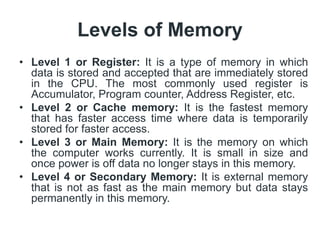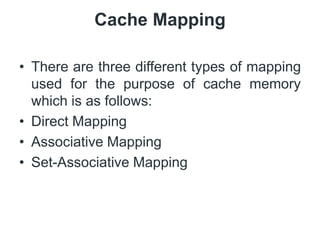The document discusses different levels of computer memory and cache memory. It describes four levels of memory:
1) Register - Stores data accepted by the CPU.
2) Cache memory - Faster memory that temporarily stores frequently accessed data from main memory.
3) Main memory - The memory the computer currently works on but data is lost when powered off.
4) Secondary memory - External memory that stores data permanently but is slower than main memory.
It then discusses cache memory in more detail, describing it as very high-speed memory that stores copies of frequently used data from main memory to reduce average access time. It explains the concepts of cache hits, misses, and hit ratio. Finally, it

















